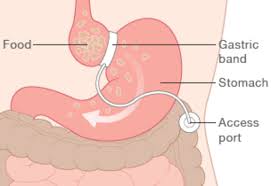
Root canal treatment is usually not the first thing that comes to mind when most people think about emergency dentistry. Instead, their mind usually goes to oral trauma from an accident or sport and chipped or broken teeth.
However, root canal treatment can be an emergency that requires a visit to a dental emergency room, even if this procedure can be carried out during a scheduled appointment in a dental clinic. Go through this blog post to know everything about root canal.
Emergency root canal treatment
Bacteria infection is responsible for most dental problems. Most times, bacteria cause cavity, which may spread to the gum line when left untreated. This may damage the tooth root, which requires an emergency tooth canal treatment to repair the damaged tooth.
A root canal procedure can remove the bacteria that damage the root canal and prevent further damage that may require removing the affected tooth.
What is a root canal?
A root canal is an endodontic treatment. Endodontic is a Greek word meaning ‘inside the teeth’, so endodontic treatment involves treating inside the tooth.
The tooth has several parts – the pulp is the inner part of a tooth. This soft tissue houses blood vessels and nerves; it is beneath the enamel and hard dentin
The dental pulp extends from the root of a tooth to the crown. It is an integral part of the tooth during tooth development but unimportant when the tooth becomes mature. If the dental pulp gets infected, it requires a root canal.
During a root canal treatment, the dentist will place a rubber dam around the affected tooth to prevent infection of the surrounding teeth. The dentist will remove the inflamed pulp, clean the pulp chamber and disinfect it before filling and sealing the tooth.
Reasons for emergency endodontic treatment
Several common conditions can cause damage to the root canal. They include:
- Bacterial infections
Bacterial infections are the most common causes of endodontic issues. When bacteria enter the pulp through a decayed, cracked, or damaged part of the teeth, it causes infection in the tooth pulp and tooth abscess if left untreated.
- Injuries
The teeth can become injured by an indirect or direct hit to the mouth, and some mouth injuries can dislodge a tooth from its socket. If you have a dislodged tooth, you may need a root canal to stabilise the injured tooth.
- Chips and fractures
When a part of the tooth or crown detaches from the socket of the tooth structure, it requires root canal treatment. A fracture or chip can expose the pulp, leading to sensitivity and severe toothache.
- Removals
If your tooth gets knocked out from its socket, rinse it immediately and place it in the socket. If you can’t put the tooth in its socket, place it in milk to keep the inner part of the teeth alive before seeking emergency treatment. The dentist will fix the dislodged teeth in the socket using a special splint and carry out an emergency root canal treatment to save the tooth.
Symptoms of root canals
Identifying the symptoms of a root canal and other endodontic problems is essential to avoid dental complications. The symptoms include;
- Persistent pain
Persistent tooth pain is one of the common signs that you may need a root canal treatment. The pain may subside and occasionally occur, affecting the bone of the tooth, face, jaw, teeth, or face.
- Tooth sensitivity to cold or hot drinks and food
Tooth sensitivity can occur as a dull ache or sharp pain. If the ache continues for a while, even after eating or taking a drink, you may need a root canal.
- Inflammation and tenderness of the gums
Having swollen gums near an aching tooth may be a sign of a dental problem that requires a root canal. The gum inflammation may come and go but feel tender when you touch the affected area.
- Tenderness when chewing and biting
If your tooth feels sensitive when you touch it, you may have a damaged nerve or severely decayed tooth, which requires root canal treatment.
- Tooth discolouration
When the pulp becomes infected, the internal tooth tissues break down, leading to greyish-black tooth colour. If you notice a change in your tooth colour, visit your dentist immediately.
- Tooth mobility
An infected tooth may become loose from its socket, but a root canal may not be the problem if you have several loose teeth.
How to manage root canal pain
If you feel pain or tooth sensitivity, you can try the following remedies at home while waiting for an appointment with your dentist.
- Apply a hot compress inside your jaw
- Take an over-the-counter pain killer like Tylenol or paracetamol
- Soak a cotton ball in apple cider vinegar and press it on the affected tooth gently
- Swish warm salty water in your mouth
- Place an ice pack or cold compress on the area
Does root canal treatment hurt?
An emergency root canal may seem like a painful and complex procedure, but it is similar to filling a deep cavity. The dentist will likely administer local anaesthesia so you won’t feel pain during the process.
If you have a fever or facial swelling resulting from the infection, the dentist may prescribe antibiotics to kill the bacteria and reduce the pain. Although an emergency root canal is similar to a deep filling, it takes a longer time because the dentist will have to clean the decayed pulp, disinfect the tooth roots and fill them.
Recovery time after root canal
After a root canal, the discomfort and pain should last only a few days if you take proper oral health care. The pain is usually mild, and over-the-counter pain killers such as acetaminophen or ibuprofen can alleviate the pain.
If the toothache persists for more than three days, schedule a follow-up appointment with your dentist. Try not to chew on hard foods immediately after your root canal treatment because hard foods can increase the pain.
If you experience symptoms that require emergency treatment, ensure you visit your dentist immediately. You can visit at www.emergencydentistinlondon.co.uk to book an emergency root canal treatment with our experienced emergency dentist.





